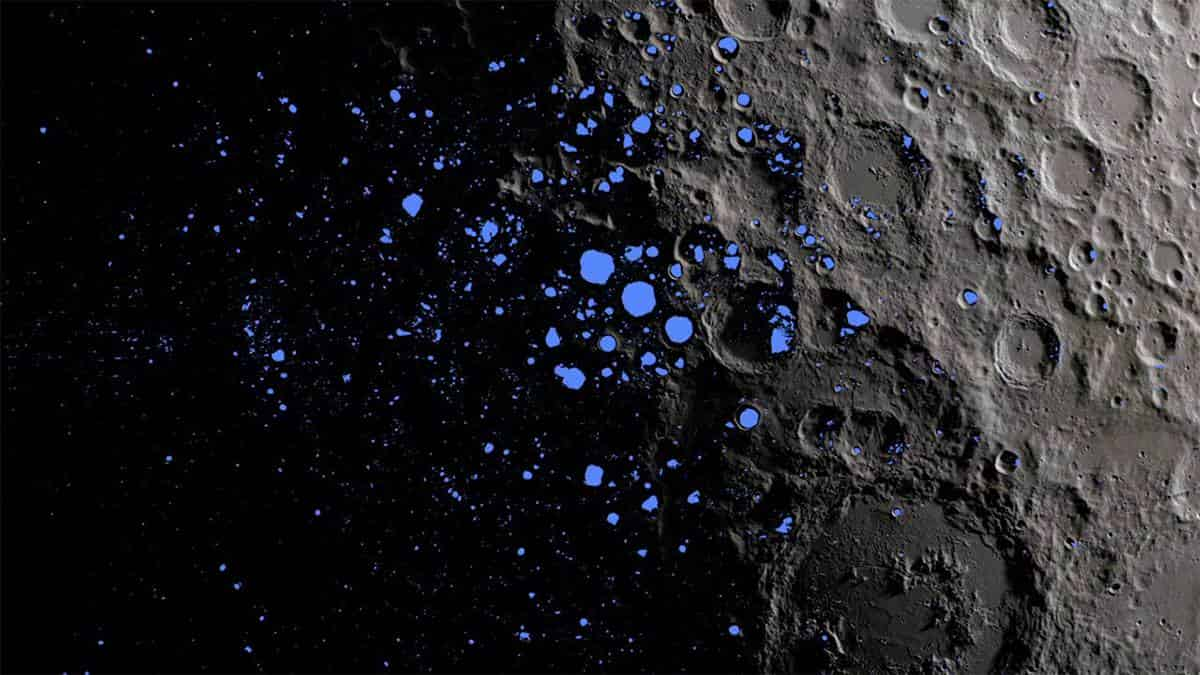Moon contains more water than previously anticipated even on the sunlight surface: NASA

There might be more water on the moon than recently accepted, and it could be utilized as an asset during forthcoming missions – like NASA’s arrival of people to the lunar surface through the Artemis program.
The two examinations distributed in the diary Nature Astronomy, and scientists shared their discoveries during a NASA public interview on Monday.
In the principal study, scientists utilized SOFIA to watch the moon at a frequency that uncovered the mark of sub-atomic water, or H2O.
“Unexpectedly, water has been affirmed to be available on the sunlit surface of the moon,” said Paul Hertz, NASA’s Astrophysics Division chief during Monday’s question and answer session.
Past examination uncovered recognitions of water on the outside of the moon close to the south pole. Yet, the mark of atomic water at the frequency utilized in this examination could likewise be related with hydroxyl, which is oxygen fortified with hydrogen. In natural science, alcohols will in general incorporate hydroxyl, which adds to making atoms solvent in water. Hydroxyl is additionally a fixing in channel more clean.
The SOFIA recognitions affirm that water, not hydroxyl, can be discovered caught in glass globules or in the middle of grains on the moon at its high southern scopes. There, water is available between 100 to 400 sections for each million.
The way that this water is inside grains or in the middle of grains on the lunar surface shields it from the moon’s brutal and lighted climate.
In the subsequent investigation, analysts utilized information from the lunar orbiter to consider cold snares in forever shadowed territories on the moon where water could stay solidified. A portion of these virus traps may have dodged the sun for billions of years.
Ice-filled polar snares
The most widely recognized concealed pockets of water over the lunar surface could be caught in small penny-size ice fixes that live in lasting shadows, the scientists found.
“In the event that you can envision remaining on the outside of the moon close to one of its shafts, you would see shadows everywhere,” said Paul Hayne, lead study creator and associate teacher in the Laboratory of Atmospheric and Space Physics at the University of Colorado Boulder, in an announcement. “Huge numbers of those small shadows could be loaded with ice.”
Subsequent to evaluating the expected size of the snares, going from centimeters to kilometers, the scientists confirmed that for all time shadowed territories at both of the moon’s polar districts could contain a large number of these “miniature” cold snares. Indeed, they could be hundreds to thousands of times more plentiful than huge virus traps.
The moon could contain 15,000 square miles of forever shadowed snares in a scope of sizes that could safeguard water ice, the scientists assessed. Past assessments have put the gauge at about portion of that – at around 7,000 square miles.
“In case we’re correct, water will be more open for drinking water, for rocket fuel, all that NASA requires water for,” Hayne said.
Past looks for ice on the moon have been concentrated around the huge holes at the shafts, where temperatures have been estimated as low as negative 405.67 degrees Fahrenheit.
Huge holes near the lunar south pole incorporate Shackleton Crater, which is a few miles down and around 13 miles over. Furthermore, its majority is for all time in shadow.
“The temperatures are so low in cool snares that ice would act like a stone,” Hayne said. “In the event that water gets in there, it’s not going anyplace for a billion years.”
By utilizing information from the lunar orbiter and displaying, the specialists established that the lunar surface takes after that of a golf ball.
Obviously, genuine confirmation of these ice-filled shadowy pockets will require future burrowing by meanderers or people on the lunar surface.
In any case, future missions to the moon, such as handling the main lady and next man close to the south lunar pole by 2024 through NASA’s Artemis program, could uncover more data.
In front of that, Hayne is likewise driving the Lunar Compact Infrared Imaging System, a NASA exertion that will catch heat-detecting all encompassing pictures of the moon’s surface close to its south pole in 2022.
“Space travelers shouldn’t go into these profound, dim shadows,” Hayne said. “They could stroll around and discover one that is a meter wide and that may be similarly prone to hold ice.”


